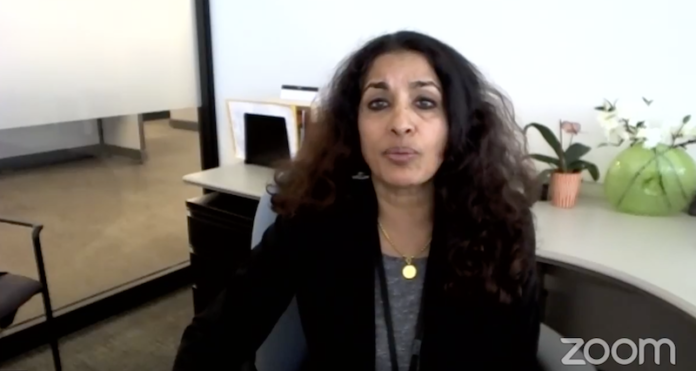Order meant to align with state plans and guidelines
During her daily live broadcast, Sonoma County Health Officer Dr. Sundari Mase announced a new health order related to COVID-19. The new order has no end date, unlike previous orders, and is aligned with recent phased orders made by Gov. Gavin Newsom. It also loosens restrictions on certain types of businesses.
“This loosening is possible because of the significant interruption of community transmission,” Mase said.
The new order went into effect at midnight on May 4. This change comes on the heels of a “soft opening” of parks on April 28. Newly permitted activities include all forms of construction, arborists, gardeners, landscapers and pool maintenance, as well as environmental site remediation.
Other businesses that may re-open their retail operations (not just essential services), include bicycle shops, auto dealers, auto supply and repair shops and nurseries. In addition, professional services, such as legal, notary or accounting services, when necessary to assist in compliance with non-elective, legally required activities or in relation to death or incapacity are now allowed.
Finally, the new order allows golf courses and driving ranges to operate, subject to specific Golf Site Requirements, relating to social distancing and hygiene management. Faith-based organizations may provide social services, and the new order allows counseling and the hosting of religious services through virtual streaming or similar technology.
Though some of the order represents a loosening, there are strict requirements for social distancing, protecting employee health, preventing crowds gathering, increasing sanitization and preventing unnecessary contacts. There are new and specific safety requirements for constructions sites and golf courses. The new rules for construction sites can be found here. The full list of rules regarding the operation of golf courses and driving ranges can be found here.
There is also some loosening of the restrictions on real estate agents and sales, but showings are still encouraged to be virtual. However, there is now some wiggle room for in-person showings. In-person residential viewings must be by appointment only and must be limited to two visitors (from the same household or living unit) and one individual showing the unit. In-person visits are not allowed when the occupant is still residing in the residence unless gloves, facial coverings and shoe coverings are worn during the visit; there is no contact with staging items or personal property during the showing; and the seller or landlord cleans the property after the visit with products on the Environmental Protection Agency’s approved list of disinfectants, paying attention to any areas that may be commonly touched, such as door knobs, handles, counter tops and staging items.
Mase stated that the reason the new order does not have an end date is because it allows the county more maneuverability.
“The order doesn’t have an end date. We did this because we want to be able to respond and make modifications as necessary either loosening or tightening, based on our data and as state orders change rapidly,” she said.
The plan going forward for continued loosening of restrictions is based on the governor’s recently announced four-stage roadmap, which is meant to lead to a full reopening.
Stage 1, Safety and Preparedness, is the stage we are currently in and features continuing to build out testing, contact tracing, the use of personal protective equipment (PPE) and hospital surge capacity. It also includes making essential workplaces as safe as possible through physical and workflow adaptation, widely available PPE, an “essential workforce safety net” and encouraging individual behavior changes. It also includes preparing sector-by-sector safety guidelines for an expanded workforce.
Stage 2, lower risk workplaces, is the gradual opening of some lower risk workplaces with adaptations. These include retail outlets for curbside pickup, manufacturing, offices where telework is not possible and the opening of additional public spaces. There is also an expanded workforce safety net including wage replacements so workers can stay home when sick.
Stage 2 also includes the opening of schools and childcare facilities with adaptations. Summer programs may happen, and the school year may start earlier. Childcare facilities will provide more care, and learning gaps from distance learning will be addressed. However, institutions must ensure students and staff are protected. Stage 2 will also allow a broader workforce to return.
The shift to stage 2 will occur, according, to the governor’s order when hospitalizations and ICU trends stabilize, hospital surge capacity is able to meet demand, there is a sufficient supply of PPE to meet demand, there is sufficient testing capacity to meet to meet demand and there is capacity to contact trace statewide. There will be an official order to shift into phase 2, though again a spike in cases could cause a return to phase 1.
Stage 3 will lead to the opening of higher risk workplaces like personal care facilities (hair and nail salons), entertainment venues like theaters and sports venues with no spectators, and in person religious services, including weddings.
Stage 4, will be a return to near normalcy and is dependent on the development of a therapy for COVID-19, such as a vaccine.
The full text of the new order can be found at https://socoemergency.org/order-of-the-health-officer-no-19-09-shelter-in-place-extended/#faq5-1.








